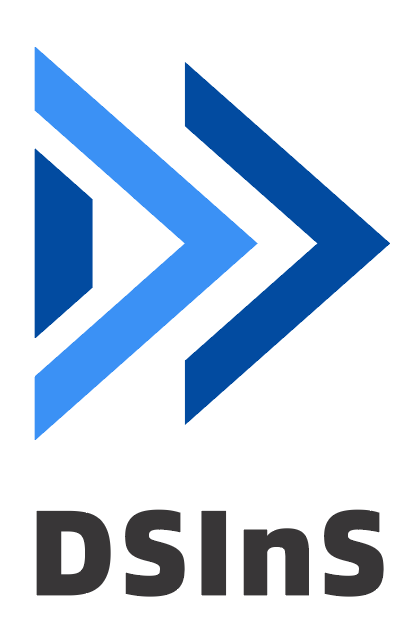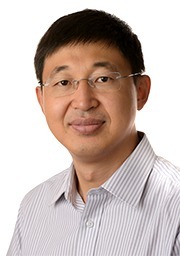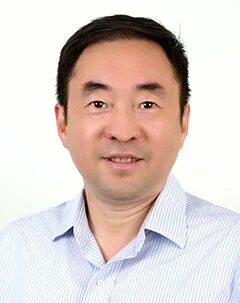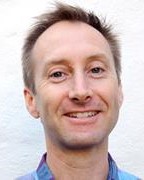
Speakers
Prof. Yonghui Li The University of Sydney, Australia | Profile: Yonghui Li is now a Professor and Director of Wireless Engineering Laboratory in School of Electrical and Information Engineering, University of Sydney. He is the recipient of the Australian Research Council (ARC)Queen Elizabeth II Fellowship in 2008 and ARC Future Fellowship in 2012. He is an IEEE Fellow. His current research interests are in the area of wireless communications. Professor Li was an editor for IEEE transactions on communications, IEEE transactions on vehicular technology and guest editors for several special issues of IEEE journals, such as IEEE JSAC, IEEE IoT Journals, IEEE Communications Magazine. He received the best paper awards from several conferences. He has published one book, more than 300 papers in premier IEEE journals and more than 200 papers in premier IEEE conferences. His publications have been cited more than 20000 times. Title: Beyond 5G towards a Super-connected World Abstrat: Connected smart objects, platforms and environments have been identified as the next big technology development, enabling significant society changes and economic growth. The entire physical world will be connected to the Internet, referred to as Internet of Things (IoT). The intelligent IoT network for automatic interaction and processing between objects and environments will become an inherent part of areas such as electricity, transportation, industrial control, utilities management, healthcare, water resources management and mining. Wireless networks are one of the key enabling technologies of the IoT. They are likely to be universally used for last mile connectivity due to their flexibility, scalability and cost effectiveness. The attributes and traffic models of IoT networks are essentially different from those of conventional communication systems, which are designed to transmit voice, data and multimedia. IoT access networks face many unique challenges that cannot be addressed by existing network protocols; these include support for a truly massive number of devices, the transmission of huge volumes of data burst in large-scale networks over limited bandwidth, and the ability to accommodate diverse traffic patterns and quality of service (QoS) requirements. Some IoT applications have much stringent latency and reliability requirements which cannot be accommodated by existing wireless networks. Addressing these challenges requires the development of new wireless access technologies, underlying network protocols, signal processing techniques and security protocols. In this talk, I will present the IoT network development, architecture, key challenges, requirements, potential solutions and recent research progress in this area, particularly in 5G and beyond 5G. |
Prof. Yan Wang Macquarie University, Australia | Profile: Dr. Yan Wang is currently a Full Professor in the School of Computing, Macquarie University, Australia. His research interests cover trust management, recommender systems, social networks, crowdsourcing, services computing, cyber security. Dr. Yan Wang has served on the editorial board of IEEE Transactions on Services Computing (TSC) by IEEE, Service-Oriented Computing & Applications (SOCA) by Springer (2011-2018), Human-centric Computing and Information Sciences (HCIS) by Springer, and Frontiers in Big Data by Frontiers. He also served as a guest co-editor of a special track on trusted computing of IEEE Access in 2017, and a special track on e-commerce of IEEE Internet Computing in 2008. Dr. Yan Wang has served as a General co-Chair of IEEE ATC2013, IEEE ATC2014, IEEE MS2015, IEEE ICWS2016 and IEEE CLOUD2017, AWC2018 and AWC2019, a Program co-Chair of IEEE SCC 2011, ATC 2011, IEEE MS2014, IEEE SCC2018, IEEE SOSE2018, IEEE SCC2019, and a Local Organisation Chair of IEEE DSAA2020. Title: From Single-Target to Dual-Target and Multi-Target in Cross-Domain Recommender Systems Abstrat: Recommender System aims to predict to what extent a user may like an item based on historical data. Data sparsity is a classic problem in recommender systems. A solution for it is to capture user preferences by doing cross-domain knowledge transfer. This talk will first introduce a few research studies on cross-domain recommender systems (CDR). The first one proposes a novel mechanism to better obtain user features from the data-richer domain and transfer them to the data-sparser domain for improving recommendation accuracy in the context of single-target recommender systems. The second study proposes the first framework in the literature for dual-target recommendation systems and provides a solution for it, where user features can be obtained from both data-richer domain and data-sparser domain for cross-domain transfer. Namely both data-richer domain and data-sparser domain are source domains and target domains, and recommendation performance can be improved on both domains simultaneously. Furthermore, a unified framework for multi-target cross-domain and cross-system recommender systems will be introduced. In the end, some future directions in this area will be discussed. |
Prof. Paul Kennedy University of Technology Sydney, Australia | Profile: Professor Paul Kennedy has been recognised for his decades-long contribution to data analytics teaching, learning and academic leadership. Professor and Head of the School of Computer Science in the Faculty of Engineering & IT, Paul is one of the main data analytics teachers at UTS.Paul also enjoys collaborative and multi-disciplinary research, with a focus on the data analytics of biomedical data. He mainly collaborates with paediatric cancer researchers to better understand and predict treatment outcomes for childhood cancer sufferers. He explores also other areas of data analytics and bioinformatics, including developing bioinformatics pipelines to facilitate animal vaccine discovery, developing text analytics approaches to scientific literature and social media, and developing methods for use with flow cytometry data.Paul is the Lab Director of the Biomedical Data Science Laboratory in the UTS Australian Artificial Intelligence Institute, which aims to use knowledge as the infrastructure to support decision making in biomedicine. He is also co-director of the UTS Ontario Tech Joint Research Centre for AI in Health and Wellness. He has also served the research community by working on the Organising Committee for the Australasian Data Mining Conference since 2006, and has been co-editor of AusDM proceedings many times. He was co-chair of the 2015 Australasian Computing Science Week. He has contributed to many international program committees and reviewed for international journals and books. He is an ARC Expert Assessor and has co-authored more than 100 publications. He has graduated 17 PhD students and regularly reviews HDR theses. He is also a member of the Institute of Analytic Professionals Australia. Paul has been awarded research funding exceeding $2.4 million, and has considerable industry experience developing software and running DM projects, including with Cancer Australia mapping population-level cancer treatment pathways. He is a committee member for ISO/IEC SC42 producing standards Title: Intelligent Systems for Digital Healthcare Abstrat: The healthcare domain is a rich source of problems that can be tackled with AI and intelligent systems, especially with the increasing access to large healthcare datasets. However, it is vital to take a cross-disciplinary approach because both data and problems need domain interpretation and understanding. Biomedical data comes from tissue banks and biorepositories and data generation crosses disciplines ranging from wet lab skills dealing with biological samples through to histopathological skills with microscopes and to computing skills building AI models. Research advances quickly in all of these disciplines and arguably no one individual can keep abreast of all fields. Consequently, we need to work together to solve problems, understanding our respective strengths, approaches and points of view. This talk is about the cross-disciplinary work we have been doing in the Biomedical Data Science Laboratory in the UTS Australian Artificial Intelligence Institute. The BDS Lab has been working with the Tumour Bank at The Children’s Hospital at Westmead since 2003. I will describe the research we have done using histopathology data from stained tissue microarrays for paediatric cancer. Next I will show some of our work in visualising spaces of data derived from patients, including a virtual reality system to explore oncology models and an approach for visualising patient journeys from electronic health records. Finally I will show some of the work we have been doing in the UTS Ontario Tech University Joint Research Centre in AI for Health and Wellness using physiological data and models. |


